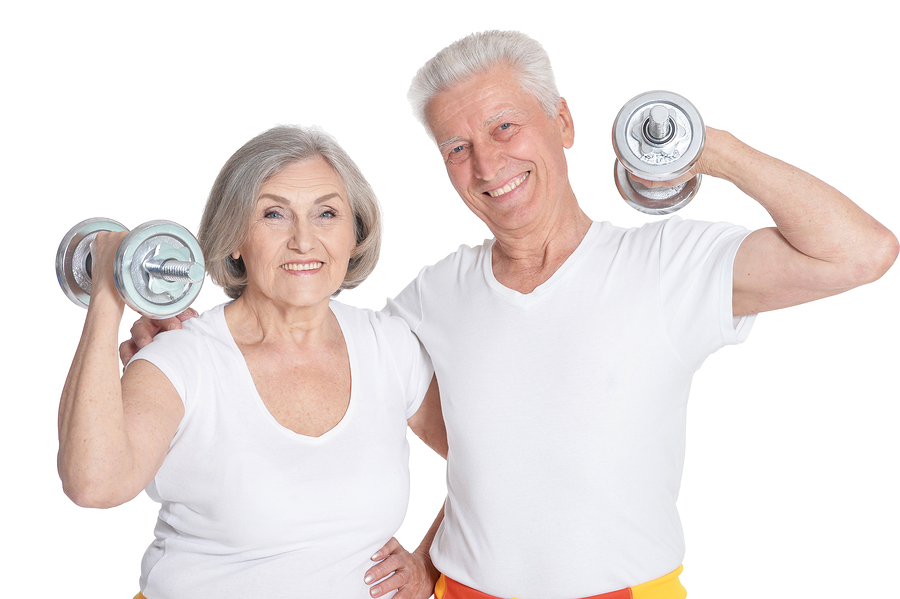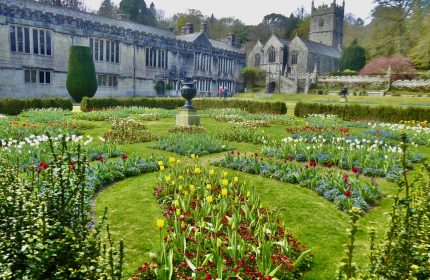How to prevent osteoporosis
Did you know that osteoporosis affects more than half of women over 50 and one in five men of the same age?
Often labelled the silent killer, osteoporosis develops slowly, generally only revealing itself when a relatively minor fall results in a fracture prompting further investigation. These breaks are referred to as fragility fractures and are the result of low bone density the outcome of which can be weak and porous bones that break easily.
The good news is that there is much we can do to help ourselves. By looking at our diet, our exercise regime and our overall lifestyle we can improve our bone health – and it’s never too late to start.
A natural part of the ageing process, bone density starts to decline most sharply as we enter our 50s. However, for some the process is even faster, leaving them at risk of developing osteoporosis. Did you know that our bones start to decline from the time we reach our peak bone density in our mid to late twenties? So the more we can do to boost our bone health throughout our lifetime the better!
The importance of bone health
The most common fracture sites for those with osteoporosis are at the wrist, hip and spine. Spinal fractures, often the most difficult to diagnose, can be the most incapacitating. Spinal fractures can sometimes cause severe long-term pain and even height loss. A stooped posture may result when several fractures cause a compression of the spine so much so it becomes unable to support the body upright.
So although osteoporosis is not painful in itself, the fragility fractures that may result can give severe immediate and chronic pain along with restricted mobility and arthritis.
Why are women affected more than men?
Older women are particularly susceptible to osteoporosis as the rate at which bone density reduces accelerates sharply in the first 5 years or so after the menopause starts. Although men are affected too, as research tells us that one in five men over the age of 50 are likely to succumb to one or more fragility fractures.
Happily, there are steps we can all take to help prevent osteoporosis and reduce the risk of sustaining fractures.
Ways to keep our bones stronger for longer
What we should eat?
A general well-balanced diet for good bone strength should include, plenty of minerals, vitamins and protein from all the different food groups. Our diet should include lots of fruit and vegetables, dairy products, carbohydrates, meat, fish, beans, seeds and nuts.
The two main nutrients for bone health are:
Calcium – 700mg of calcium per day is the current Government guideline. With 99% of our body’s calcium stored in our bones it needs to be topped up every day for our bones to stay strong. The richest source of calcium is found in dairy products but if you do not wish to eat too much dairy then calcium rich foods include broccoli, kale, soy beans and fish (in particular salmon and sardines).
Vitamin D – not enough vitamin D can restrict the absorption of calcium from the foods we eat so it is very important to get a good amount. Most of our vitamin D is taken in through our skin from sunlight. If you manage to get outside a little every day and expose your face, hands and forearms to the sun then during the spring and summer months you should be getting an adequate intake. However, if you are inside for much of the time and away from natural light then you may need to supplement your vitamin D. Good sources include tuna, mackerel, salmon, cheese, eggs and fortified dairy and cereals.
Other nutrients which can help to keep bones strong are:
Magnesium – the body’s ability to absorb magnesium decreases as we get older so it’s worth topping it up. Sources of magnesium include green vegetables, peas, beans, lentils, peanuts, nuts, seeds and fish.
Zinc – found in red meat, poultry, cereals and pulses, zinc is crucial for bone tissue renewal.
Phosphorus – found in dairy, nuts, seeds, beans, meats, phosphorus is required by calcium in order to build strong bones and tissues.
Plenty of fruit and vegetables – the minerals and antioxidants found in fruit and veg aid bone health, in particular vitamin C which stimulates the production of bone forming cells.
It is advisable to reduce the amount of salt in your diet as a high intake can increase the quantity of calcium excreted from the body.
Read more on how to limit your salt
Do dietary supplements help?
Our bodies become less efficient at absorbing minerals as we age so a dietary supplement may benefit some. Others may have too little calcium in their diet or are not sufficiently exposed to sunlight so these people may also benefit from taking vitamin and mineral tablets for their bones.
If you are on medication for osteoporosis you may be prescribed a vitamin D and calcium supplement as an addition to your diet. For those not taking prescribed supplements there is a wide range available over the counter at pharmacies or in supermarkets, health food shops and online.
It is advisable, however, to consult with your GP before taking supplements as they will be a position to advise whether they are right for you.
Exercise for strong bones
Particularly important for older adults, exercise is essential for building bone. Exercise prevents falls and related fractures by improving co-ordination and balance along with maintaining muscle strength.
It has been reported that regular physical activity can halve the risk of hip fracture and even walking for just 20 minutes a day can decrease the likelihood of suffering a fall and therefore minimising the risk of a resulting fracture.
A combined approach
The best exercises for building and maintaining strong bones are a combination of weight bearing and muscle strengthening exercises.
Georgina Camfield tells us: “bone grows stronger by reacting to increases in loads and forces so short bursts of varied, vigorous activity are most effective. However, it’s worth noting that although all types of different exercise has all kinds of fabulous health benefits for your body and mind not all are specifically aimed at boosting bone strength – cycling and swimming are examples of this. My advice therefore, is to try and fit some of the exercises below into your weekly routine in order to see the most benefit.”
Weight bearing for bone strength
These are exercises where you support the weight of your own body. Brisk walking, hiking, jogging, aerobics, climbing stairs, skipping, tennis or dancing are some good examples. Most people can do some of these things no matter age, agility or level of fitness.
Read some tips on how to start running
Strengthen your muscles
These are exercises that boost bone health through the action of the body’s tendons pulling on your bones. Resistance training or lifting weights will achieve this. Lifting weights may not be everyone’s cup of tea but even an exercise as simple as lifting a tin of beans up and down while watching television will help to strengthen wrists.
Yoga, pilates, resistance training (using bands or machines), dancing and gardening can all help to strengthen muscles.
Read more on exercising indoors
Lifestyle changes
Research has shown that you are more likely to develop osteoporosis and have a higher risk of bone fracture if you are a smoker. Smoking also impairs the bone healing process after a break.
Smoking – the National Institute of Arthritis and Musculoskeletal and Skin Diseases tells us that the best thing a smoker can do to protect their bones is to stop smoking – even older adults who have always smoked can benefit from stopping.
Alcohol – too much alcohol can interfere with the body’s calcium levels and the production of bone-protecting hormones and even small amounts can lead to more accidents and injury.
Medication
There is effective medication for those with osteoporosis in the UK. These include:
- Bisphosphonates – these aim to slow bone breakdown
- Raloxifene and strontium ranelate – these aim to improve bone density
- HRT – replaces oestrogen lost in women after the menopause
- Calcium and vitamin D supplements
Who is at risk from developing osteoporosis?
People most at risk from developing osteoporosis are:
- Women – especially those who have had irregular periods, an early menopause or a hysterectomy before 45
- Those with a family history of fractures or osteoporosis
- Those of European or Asian descent
- The over 60’s
- Those who are underweight or have suffered from an eating disorder
- Those on a low calorie diet
- Those who have been on long-term steroid medication
- Alcohol drinkers
- Smokers
- Those with conditions that affect the absorption of food such as Coeliac disease or Crohn’s disease
- Men with low levels of testosterone
- Those with reduced mobility
- Pregnant women
If you have suffered a fracture after a minor fall and you have 3 or more of the risk factors listed above then it may be sensible to make an appointment to see your GP. They can offer you a scan to measure your bone mineral density and then assess if you are suffering from osteoporosis or are likely to develop it.
Royal Osteoporosis Society – 0808 800 0035
Disclaimer
All content on Silversurfers.com is provided for general information only, and should not be treated at all as a substitute for the medical advice of your own doctor or any other health care professional. Silversurfers will not be responsible or liable for any diagnosis made by a user based on the content on www.silversurfers.com and we are also not liable for the content of any external websites or links from or to Silversurfers to any other websites. Please always consult your own doctor if you’re in any way concerned about any aspect of your health
Melina - Assistant Editor
Latest posts by Melina - Assistant Editor (see all)
- Banana bread with SunGold kiwis - February 20, 2025
- A tribute to Bob Marley - February 4, 2025
- Going to Work on an Egg! - January 29, 2025
- The Very Best of Petula Clark - January 14, 2025
- 50 Years of Coat Trends - January 12, 2025




















